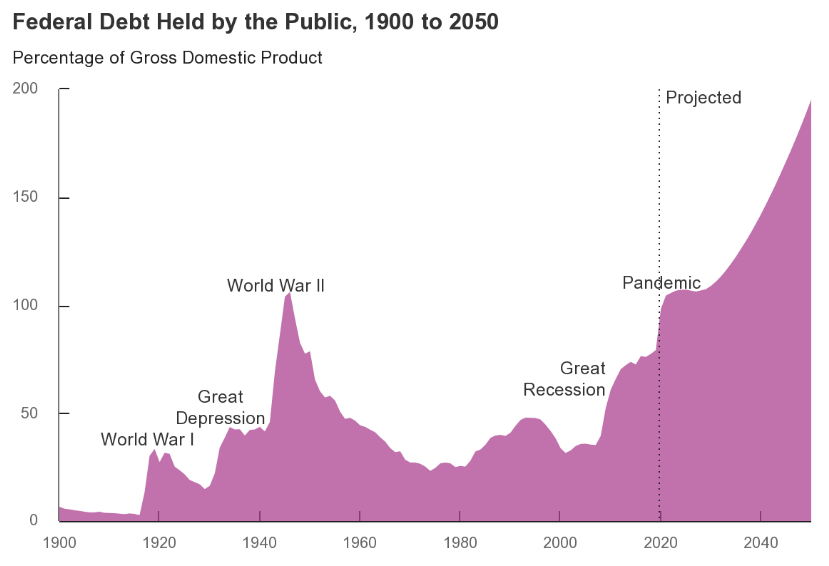The coronavirus pandemic and federal efforts to provide relief will significantly add to the federal debt in the years ahead, the Congressional Budget Office projected Monday.
By the end of 2020, the federal debt held by the public is projected to be equal to 98% of gross domestic product, up from 79% in 2019.
As deficits continue to rise next year, the debt is expected to reach 104% of GDP in 2021. That figure rises to 107% in 2023, which would be the highest percentage in the nation’s history. The previous high was 106% of GDP in 1945, just after the end of World War II.
The CBO projects that the debt as a percentage of GDP will be 45 percentage points higher in 2049 than the 144% the agency projected last year.

The debt level is expected to be elevated over the next 30 years because of the larger deficits incurred in 2020 and 2021, which the CBO reports “contributed significantly” to the jump in debt.
The CBO earlier this month reported that short-term deficit levels would hit historic highs in large part due to the federal response to the pandemic. It projected that the federal deficit for the current fiscal year will be $3.3 trillion, more than triple the shortfall recorded in fiscal year 2019. The current fiscal year ends on Sept. 30.
Beside the federal response to the pandemic, another factor driving the deficit and the debt upward are increases in spending.
After the response to the pandemic has faded, spending as a percentage of GDP still continues to grow, as interest paid on the debt is expected to quadruple. This increase will account for most of the growth in deficits after the pandemic. Still, spending on entitlements will also increase “because of rising health care costs per person and, to a lesser degree, the aging of the population,” the CBO reports.
The amount of money the federal government receives is also expected to rise, especially after certain tax breaks expire in 2025. That growth continues after 2030, but it does not keep pace with the growth in spending, meaning the federal government will likely have to increase borrowing. Federal revenues are projected to increase from 16% of GDP in 2019 to just 19% in 2050.





